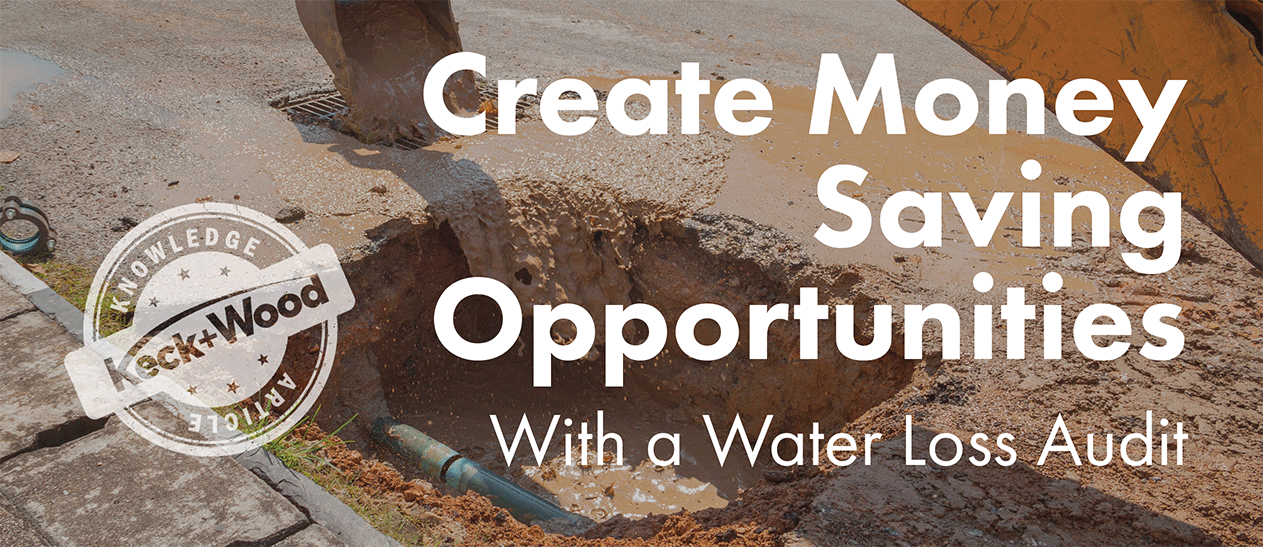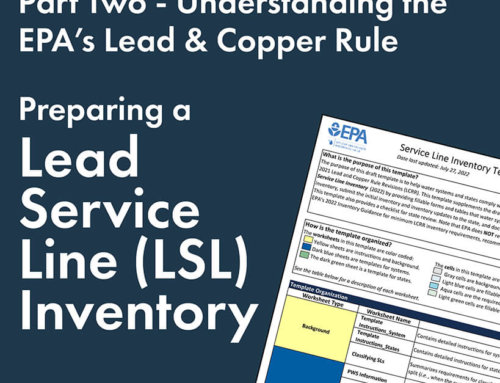
Cities, Towns and Counties across the Southeast have gone through a brutal summer. Temperatures were nearing record highs and the chances for rain were becoming more infrequent. With these conditions, the smart plan was to conserve essential resources such as electricity and water as much as possible. However, what if a water agency’s supply is being leaked into the ground? How can a water conservation strategy be executed without knowing the severity of the issue?
How extensive is the water loss issue?
According to an article posited on the American Society of Civil Engineers website in 2020, “Leaking pipes lost the equivalent of $7.6 billion worth of treated water in 2019, and this loss is projected to more than double over the next 20 years, reaching $16.7 billion in 2039.” Apparently, this is enough water to fill over 9,000 swimming pools… per day!
The web story continued on with more concerning statistics: “America’s water infrastructure is aging, with many drinking water systems and wastewater treatment facilities nearing the end of their respective design lives (75-100 years), causing contamination and economic disruptions to communities. Between 2012 and 2018, the rate of water main breaks in the U.S. rose by 27 percent to roughly 300,000 breaks per year.” That is the equivalent to a water main break every two minutes across the US.
Water loss is a silent thief, it quietly steals from communities and taxpayers every day without their knowledge through natural deterioration and unforeseen neglect. But how can water agencies and communities reverse the theft, and start creating money saving opportunities from the same infrastructure of pipes, pumps and tanks?
First step: complete a Water Loss Audit (WLA)
Why is tracking water loss so important? Less water that reaches customers means less revenue for the water agency to make important repairs. Also, having less monetary independence can become an issue when looking for approvals to make system improvements or conduct expansions in the future. To understand the extent of leakage within a system, a Water Loss Audit (WLA) is a logical first step.
A WLA enables a water agency to account for water loss over the course of a year, which can then be converted to the amount of lost revenue for every gallon of water that fails to reach a customer. A water engineer can work with the agency to complete the American Water Works Agency’s (AWWA) Water Audit program. Entering known data such as volume of water supplied, the authorized consumption, the physical system parameters, and client cost data, will provide a solid baseline of information to work from called a Validity Score.
Adding more depth to the WLA’s data, the engineer can collaborate with the agency’s water operators and other stakeholders to work on the tougher, more detailed questions on the AWWA Water Audit Program such as the Infrastructure Leakage Index (ILI), Water Import Grading Criteria, Billed Metered Consumption, and others. This detailed and time-consuming process is required to receive a stronger Validity Score, a datapoint that reinforces the findings of the study.
To assist with this audit, enlisting the services of an Engineer who is QWLA (Qualified Water Loss Auditor) accredited is beneficial for the overall process, since the WLA itself will need to be audited by a QLWA.
Completing this annual water loss audits is useful to “unmask” the thief in your water system, whether its crumbling pipes, general decay, worn pumps, inefficient filtration, etc., issues which can be addressed to improve the overall performance and savings of the system.
Second step: use the WLA findings build a Water Loss Control Program (WLCP)
Once the rate and quantity of water loss is known, how can an agency act on the data? The most logical approach is to create a Water Loss Control Program. According to a memorandum executed by the Georgia Department of Natural Resources in 2020, all public water systems that regularly serve 3,300 or more individuals are required by the Water Stewardship Act of 2010 to Improve Water Supply Efficiency, and to complete and implement a Water Loss Control Program (WLCP). If this protocol is not followed, the agency can face repercussions from the state, leading up to a non-renewal of their water withdrawal permits. So needless to say, it’s important to develop a WLCP. For agencies serving less than 3,300 customers, a WLCP is still recommended to improve on water delivery efficiency.
A WLCP needs to assess, and contain a plan to implement efforts that can improve the WLA validity score in the future. These may include, but are not limited to: 1) Leakage Management, including distribution system water leakage detection and repairs, 2) Finished Water Meter Flow Verification, 3) Customer Meter Testing and Calibration, 4) Resource Allocation, including planned preventative maintenance, and 5) Revenue Recovery Activities.
Agencies don’t receive a stronger Data Validity Score by what is put into the WLCP, but, rather, the score is improved by information provided for the WLA. Agencies use the WLCP to outline the action items of how they will improve next year’s WLA validity score.
Third step: find the funds needed for repairs & improvements
Once the water loss control program has been created and submitted to the Georgia DNR (if required based on size), there may be elements of the plan that can be instituted in a short time frame, such as additional water meter accuracy tests, review billing terms & rate structures, building a digital water system model or map. However, there are other projects such as meter replacements and water main replacements that go beyond the repair and maintenance budget. For these capital investment projects there are a few ways to address the potential financial need:
A Customer Rate Change –the water agency may consider one to address the costs of repairs. By spreading the anticipated costs across the entire client base, the increase may be minimal depending on the repairs needed and size of the client base. The engineering team can help craft the story to state the need for the increase and how the improvements will benefit the subscribers.
Grants – Once the improvement needs are identified, there are different federal and regional grants that may be available to assist in funding. For example, the USDA offers Emergency Community Water Assistance Grants to help communities provide safe, reliable drinking water. The USEPA also have drinking water grants and other financial resources to help offset the costs. Programs such as the Water Infrastructure Improvements for the Nation Grant, Public Water System Supervision Grant, and the Bipartisan Infrastructure Law Drinking Water Grant are just a few of the options available. Having an engineer team with grant writing experience can help advise on which programs would be beneficial to the community.
Low Interest Loans, Bonds or Tax – There are different financial vehicles available to communities to obtain low interest loans, construction bonds, or even work towards instituting a SPLOST (Special Purpose Local Option Sales Tax) to cover the costs of the water loss control program. The engineering team can help the water agency outline the needs of the funds to community stakeholders if these financial vehicles are to be considered.
For many systems, the delivery of water is more about honoring a resident’s right to clean drinkable water, as opposed to a business. However, operators need to always keep in touch with the business side of the utility. Profits are useful to re-invest back into the system for better delivery and quality.
Final step – execute the Water Loss Control Program
Once the WLA and WLCP are complete and funding has been sorted out, the final step will be to execute the plan. This is where a strong relationship with an engineering team is beneficial. From compiling the system history for the WLA, to the analytical efforts to build the WLCP, having the continuity of information combined with engineering insight can help determine the next course of action to reduce water losses. This administration can help maximize the value of any grants, and get the most value out of loans or special tax programs to benefit the community’s citizens.
A Water Loss Audit is a minimal investment, first step to maximizing the quantity of treated water available to serve the community. By shining a light on the silent thief of deterioration and unforeseen neglect, communities can conserve this resource, bill properly for all the water it treats, and reinvest in the system to provide even better service and quality.
About the Author
Matthew Kaufman, PE, QWLA has been developing engineering solutions for water systems for more than ten years. For more information, Matthew can be reached at mkaufman@keckwood.com






Leave A Comment